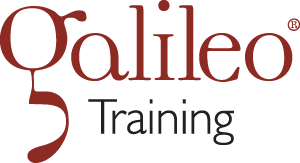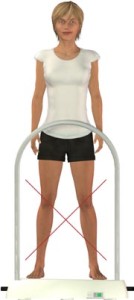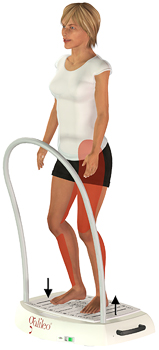Selection of the correct amplitude (foot position) and frequency

Galileo Vibration Therapy & Training should only take place after the contraindications have been excluded and after instruction by a trained personal
The vibration generated by Galileo in the body can be easily varied by adjusting the amplitude (foot width) and frequency (Hz) independent of the body weight and/or position. The amplitude, i.e. the displacement of the training platform upwards or downwards, is selected by the foot position. Details of the foot position always relate to the foot axis (middle of the foot).
Body posture and body stiffness can be used to increase vibrations in different body areas. Exercises described as “Easy” start with the feet positioned closely together, e.g. between 0.5 and 1.5.
Always maintain foot positions symmetrical to position 0.
The frequency in Hertz (= vibrations per second) is set on the device. Always select the frequency according to your training objective:

Training time
The possible training time can be longer when the stimulus (frequency and amplitude) is lower and the possible training time can be shorter when the stimulus (frequency and amplitude) is higher.
Feet close together >>> low intensity >>> longer training time
Feet wide apart >>> high intensity >>> shorter training time
Breaks of approx. 1 to 2 minutes after each session.
Example: 3 sessions, each session 3 minutes
-
3 min. training
-
1 min. break
-
3 min. training
-
1 min. break
-
3 min. training
Training time on the Galileo should not exceed 5 minutes for frequencies above 20 Hz.
3 minutes training at 25 Hz result in 4,500 muscle contractions, which lead to high neuromuscular fatigue. Therefore, after 3–5 minutes training at a frequency above 20 Hz take a short break to allow neuromuscular recovery.
Basic rules
Never stand in a foot position wider than 2.5 with stretched, stiff legs


The head should not vibrate.
If the head vibrates:
- Select a foot position with the feet closer together
- Put your weight on the forefeet
- Bend the knees a little more
A further reason for the possible transmission of vibrations to the head might be stiff or tense back muscles. If the back muscles cannot relax, pelvis movements will be transmitted right up to the head.
- Perform all exercises slowly and carefully. In this case adopt a foot position with the feet close together and set a medium frequency to relieve tension in the back muscles.
